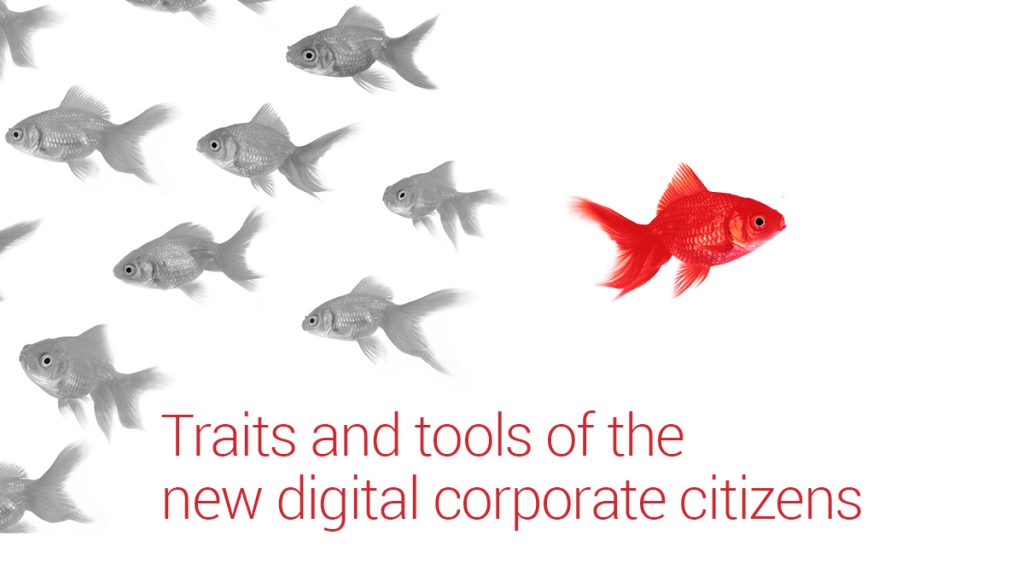The way we collaborate and interact with each other has substantially changed. Welcome to a series of blogs that explore the traits and tools of the new digital corporate citizens.
Back to the Future has always been my favorite movie franchise. In the second film, shot in 1985, we see Marty and Doc Brown traveling from that very year to 2015 where everyone is used to flying cars, self-lacing basketball shoes, and dog-walking drones.
The filmmakers, however, could not anticipate the biggest technology disruption of the last century: the birth of the internet. We still see fax machines and classic telephones in the movie. Even more, the people there behave pretty much the same way as the ones back in 1985, despite all the fascinating innovation.
As much as I would like to call myself a digital native, I realize that I am a digital immigrant instead. I just sat down to write this article, muting my phone and removing all distractions.
Digital mindset
Digital natives, they say, have hypertext minds and can multitask. But of course, I enjoy the idea that I am the best of both worlds: growing up in an analog world, maturing with technology, and making ‘digital’ part of my daily life.
Technology, and most of all the internet, has fundamentally changed the way we live our lives, the way we collaborate, work and learn. In this series of blogs we look at some of the big ideas and how companies and professionals can – and have to – adapt to the digital age. Let us look at a few of them here.
Open collaboration across organizations and time zones
Cross-functional initiatives have been around for a while, but in an increasingly distributed world where the business is IT, we design, build, operate, and consume applications in an entirely different way.
The modular nature of systems with interconnected building blocks from all over the place, each one of them moving and changing at their own speed, demands a much higher level of communication and collaboration across teams, departments, and organizations – in almost real-time.
Open and real-time toolsets
Would you start a bank today using typewriters instead of computers? The huge competitive disadvantage would force you to immediately shut down the business again.
Equally, we must embrace modern tools that are open by default and allow real-time collaboration where each project has a different set of team members with people inside and outside the firewall. This includes customers, business partners, and end-users.
How do you schedule meetings effectively in these scenarios when you do not have access to everyone’s calendar? Would you still send presentation slides via email? Let us explore the tools that are inspired by the ones digital natives use – and still provide enterprise-level security.
Open ending: Always ready, but never done
We live in a world of constant change. But the recent months have shown us how drastic, disruptive, and unpredictable some of these changes can be.
DevOps and Agile have already introduced us to the concepts of continuous improvement and feedback loops, but we also need to start questioning linear thinking in general: the idea that there is a clear path from a starting point towards a well-defined destination, the well-established beliefs that things can only go upwards and forward.
A way to deal with this uncertainty may be to keep breaking down systems and problems into smaller pieces and manage them on individual levels – which introduces even more complexity.
How do I personally keep my status as a digital immigrant? I genuinely hope you stay tuned for the upcoming posts in this series to find out more!
Digital Transformation is hard – let The Catalysts help you along your journey. It’s not as much about which piece of software you should buy, but building out a strategy together for the things that really matter.
You’ll benefit from the proven frameworks, best practices, and essential techniques that bring your business to the next level.
Let us speak about Accelerate. Today!
